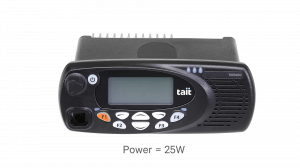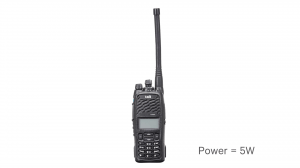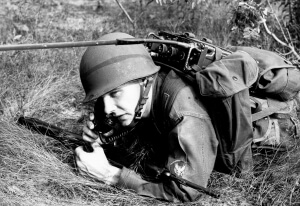Basic Radio Awareness
Modulation and Radio Building Blocks
The correlation between range and power
Range and power of portable and mobile radios have an interesting relationship.
With both portables and mobiles, the radio converts radio power into radio frequency power and is radiated out of the antenna. Range of a radio is dependent on both the power that’s available to it and also the frequency in which it’s working.

A mobile radio, which has between 25 and 50 watts of output power, is hooked up to the mains or to a car battery and is a pretty substantial radio. Because of the high output power, it will have high range. Additionally, a mobile radio radiates a lot of power, and therefore also radiates a lot of heat. This is why mobiles have a metal body; to drain off the excess heat.

By contrast, a portable radio only has an output power of about 5 watts. Because it uses a smaller battery and does not radiate so much heat, it does not need a metal body. A plastic body will suffice, and for convenience’s sake, portables have a smaller antenna. It could have a larger one to radiate out further, but this would stick like a car antenna from somebody’s back pocket or hip. This can be seen with Army personnel or police in foreign countries.
The mobile has greater range than the portable simply because it has more power available to it.

Frequency also has a part to play in this relationship. The range available in some frequencies is better than others. For instance, VHF travels further than higher frequencies such as UHF, or 700 and 800 megahertz. On the flip side, higher frequencies actually travel inside buildings better.
In conclusion, the range depends very much on both frequency output power.
 Radio Academy
Radio Academy





